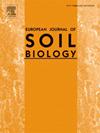Earthworms support and mediate the provision of many processes in the soil. They are therefore important in maintaining soil functioning and contribute towards the sustainability of soil management systems. Assessment of earthworm communities can provide answers regarding the land management conservation efforts and insight on soil quality. The main aim of this study was to assess the impact of farming (organic vs conventional) and tillage (no-tillage vs minimum tillage vs conventional tillage) systems on earthworm communities under varying soil conditions in arable fields across Estonia. To achieve this, we compiled data from studies carried out over a period of 21 years on Estonian arable fields. While organic farming and conventional farming showed a similar earthworm abundance, earthworm diversity was significantly higher (p < 0.05) under the organic system. Higher abundance, species richness, and the proportion of anecic species suggest that a no-tillage system creates the most favourable habitat conditions for earthworms. Soil texture further influenced the effect of management system on earthworm abundance and diversity indexes. For example, the differences in earthworm abundance and diversity between the management systems increased from lighter textured to heavier textured soils. Our results suggest that soil texture is a major factor influencing earthworm communities in Estonian agricultural fields and emphasizes the importance of including different soil texture classes when assessing the effects of agricultural management practices in field-scale studies.



